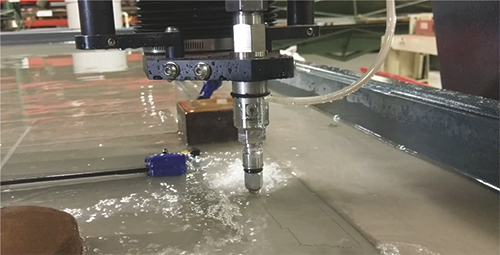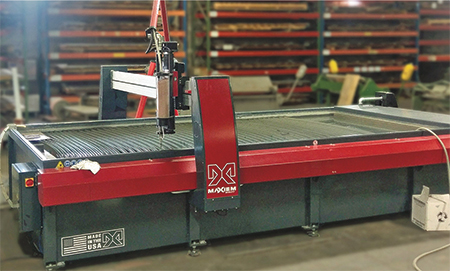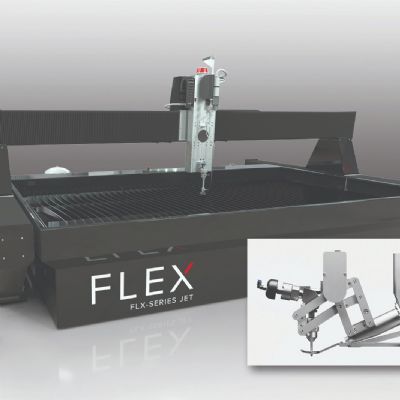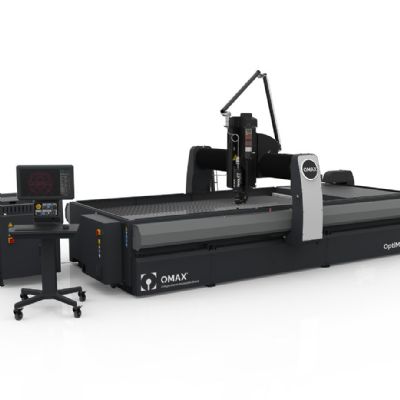Pump and Table Maintenance
Each style of waterjet system requires different maintenance protocols. A system that provides the same power at the nozzle using a lower-pressure pump will require less maintenance and replacement of high-pressure components than will a system using hyper-pressure. A pump may deliver 55,000 to 60,000 psi, but it may not be economical to run at that pressure. The higher the pressure the more wear you will experience to the seals, check valves, swivels, on/off valves, hoses and other components.
It is important to follow all equipment-manufacturer-prescribed maintenance intervals and procedures to prevent unplanned downtime. A majority of waterjet-system manufacturers suggest cleaning the equipment after each use or at some specified interval. Repairs and maintenance procedures should be conducted in a clean environment.
Direct-drive pumps, compared to intensifier pumps, are simpler to understand, troubleshoot and maintain. One style of pump can have a preventive-maintenance interval of as long as 1000 hr. Shops should regularly inspect pumps and the high-pressure plumbing for leaks. If a leak is found, fix it immediately—a leak allowed to continue at high pressure can quickly erode and damage the system and may not be repairable.
Tables with traction drives, specifically designed for the wet, abrasive-laden waterjet environments, do not require lubricants. This enhances system reliability and reduces the time and money required for maintenance compared to other linear-drive systems. Inspect table slats for wear at least once per month and replace weak or worn slats. Regularly rotating the slats to different locations on the table can greatly increase the life of the slats, as will the use of high-quality garnet.
Nozzle and Tank Maintenance
Ensure that the jewel orifice and nozzle body are properly aligned. And, after every 8 hr. of cutting, rotate the mixing tube 90 deg. This will avoid uneven wear, help minimize tapering and extend mixing-tube life.
We recommend the use of high-quality abrasives, kept dry and free of debris. Dissolved solids can be removed from the inside edge of the nozzle’s jewel orifice by using an ultrasonic cleaner containing white vinegar. In addition, keep the diamond jewels clean to maintain optimal performance.
Abrasives and material particles should regularly be removed from the tank. A solids-removal system will do this automatically, eliminating downtime incurred during manual cleaning. The filter screen for the tank’s water outlet also requires cleaning.
Waterjet owners should test the water for quality and make sure it meets manufacturer specifications. Poor water quality and high water temperature can dramatically reduce the lifespan of critical components, such as high-pressure seals, high-pressure plumbing and nozzle assemblies. A water chiller or water-treatment system may be required to overcome poor water quality and high temperature. MF
Technologies: Cutting
Comments
Must be logged in to post a comment. Sign in or Create an Account
There are no comments posted.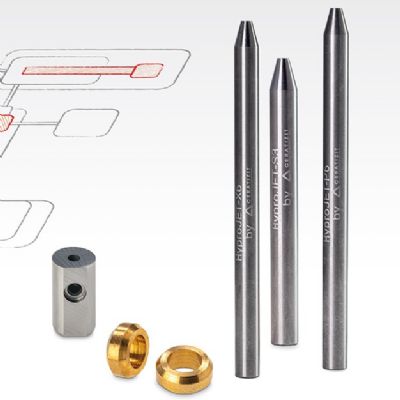 Cutting
CuttingNew Line of Wear-Resistant Waterjet Nozzles
Friday, February 24, 2023






